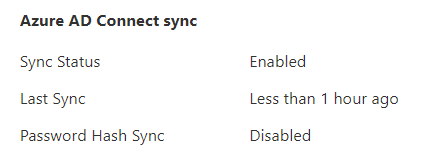6 KiB
Cloud security review
Generic tools
There are several tools that can be used to test different cloud environments. The installation steps and links are going to be indicated in this section.
ScoutSuite
AWS, Azure, GCP, Alibaba Cloud, Oracle Cloud Infrastructure
pip3 install scoutsuite
cs-suite
AWS, GCP, Azure, DigitalOcean
git clone https://github.com/SecurityFTW/cs-suite.git && cd cs-suite/
pip install virtualenv
virtualenv -p python2.7 venv
source venv/bin/activate
pip install -r requirements.txt
python cs.py --help
Nessus
Nessus has an Audit Cloud Infrastructure scan supporting: AWS, Azure, Office 365, Rackspace, Salesforce. Some extra configurations in Azure are needed to obtain a Client Id.
Common Sense
Take a look to the network access rules and detect if the services are correctly protected:
- ssh available from everywhere?
- Unencrypted services running
telnet, http, ...? - Unprotected admin consoles?
- In general, check that all services are correctly protected depending on their needs
Azure
Access the portal here: http://portal.azure.com/
To start the tests you should have credentials for a Global Reader user.
It is recommended to install azure-cli in a linux and windows virtual machines to be able to run powershell and python scripts: https://docs.microsoft.com/en-us/cli/azure/install-azure-cli?view=azure-cli-latest
Then, run az login to login. Note the account information and token will be saved inside <HOME>/.azure in both Windows and Linux.
Remember that if the Security Centre Standard Pricing Tier is being used and not the free tier, you can generate a CIS compliance scan report from the azure portal. Go to Policy & Compliance-> Regulatory Compliance or try to access [https://portal.azure.com/\#blade/Microsoft\_Azure\_Security/SecurityMenuBlade/22](https://portal.azure.com/#blade/Microsoft_Azure_Security/SecurityMenuBlade/22).
__If the company is not paying for a Standard account you may need to review the CIS Microsoft Azure Foundations Benchmark by "hand" you can get some help using the following tools. Download it from here.
Run scanners
Run the scanners to look for vulnerabilities and compare the security measures implemented with CIS.
pip install scout
scout azure --cli --report-dir <output_dir>
#Fix azureaudit.py before launching cs.py
#Adding "j_res = {}" on line 1074
python cs.py -env azure
#Azucar is an Azure security scanner for PowerShell (https://github.com/nccgroup/azucar)
#Run it from its folder
.\Azucar.ps1 -AuthMode Interactive -ForceAuth -ExportTo EXCEL
#Azure-CIS-Scanner,CIS scanner for Azure (https://github.com/kbroughton/azure_cis_scanner)
pip3 install azure-cis-scanner #Install
azscan #Run, login before with `az login`
Attack Graph
Stormspotter creates an “attack graph” of the resources in an Azure subscription. It enables red teams and pentesters to visualize the attack surface and pivot opportunities within a tenant, and supercharges your defenders to quickly orient and prioritize incident response work.
More checks
- Check for a high number of Global Admin
between 2-4 are recommended. Access it on: https://portal.azure.com/#blade/Microsoft_AAD_IAM/ActiveDirectoryMenuBlade/Overview - Global admins should have MFA activated. Go to Users and click on Multi-Factor Authentication button.
- Dedicated admin account shouldn't have mailboxes
they can only have mailboxes if they have Office 365. - Local AD shouldn't be sync with Azure AD if not needed(https://portal.azure.com/#blade/Microsoft_AAD_IAM/ActiveDirectoryMenuBlade/AzureADConnect). And if synced Password Hash Sync should be enabled for reliability. In this case it's disabled:
- Global Administrators shouldn't be synced from a local AD. Check if Global Administrators emails uses the domain onmicrosoft.com. If not, check the source of the user, the source should be Azure Active Directory, if it comes from Windows Server AD, then report it.
- Standard tier is recommended instead of free tier
see the tier being used in _Pricing & Settings_ or in [https://portal.azure.com/\#blade/Microsoft\_Azure\_Security/SecurityMenuBlade/24](https://portal.azure.com/#blade/Microsoft_Azure_Security/SecurityMenuBlade/24) - Periodic SQL servers scans: Select the SQL server --> Make sure that 'Advanced data security' is set to 'On' --> Under 'Vulnerability assessment settings', set 'Periodic recurring scans' to 'On', and configure a storage account for storing vulnerability assessment scan results --> Click Save
- Lack of App Services restrictions: Look for "App Services" in Azure
[https://portal.azure.com/\#blade/HubsExtension/BrowseResource/resourceType/Microsoft.Web%2Fsites](https://portal.azure.com/#blade/HubsExtension/BrowseResource/resourceType/Microsoft.Web%2Fsites)and check if anyone is being used. In that case check go through each App checking for "Access Restrictions" and there aren't rules, report it. The access to the app service should be restricted according to the needs.
AWS
Get objets in graph: https://github.com/FSecureLABS/awspx


